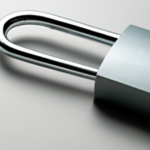If you’ve logged a significant amount of hours on the internet, it’s likely you’ve come across the dark web. Often associated with illegal actions, its true purpose is actually to offer anonymity.
With privacy concerns at the top of news headlines lately, now is an opportune time to teach people how to safely access and use the dark web. In this article, we cover how to access the dark web safely, which tools to use, what configurations to set up, and other best practices to keep you safe while browsing.
Specifically, using Tor Browser, the Tails operating system, and a Tor-specific search engine like Ahmia all can help you access the dark web safely, so let’s take a closer look…
Table of Contents
Accessing the Dark Web
Using Tor Browser
To access the dark web, you need to use a browser called Tor. Tor browser is built for privacy and blocks trackers, defends against surveillance, resists fingerprinting, and uses multi-layered encryption. You can even use Tor browser to access popular sites like Facebook and Google while maintaining privacy.
The Tor network sends traffic through three random servers, also known as relays, with the last relay being the exit relay. This process ensures that internet service providers, or anyone looking at the connection, cannot track a user’s internet activity (including the websites they visit).
Tor also does not store any browsing history, and cookies are only valid for a single session, further enhancing privacy.
It’s important to note that using Tor may not be legal in some countries, so users should check their country’s laws before using it.
Using Tails
Tails is an operating system designed for privacy and is a great option for users who want to protect their privacy completely. Tails operates with random access memory, meaning it does not store anything. so you can use your flash drive’s memory to access the internet, temporarily download files, and browse anonymously without being tracked or stored.
Users can download Tails to a flash drive and run it as their operating system. When using Tails, users should ensure that they only use it on a USB drive and not on Windows, Mac, or Linux. This is because data is always being sent back to the operating system provider, which can compromise privacy.
Tails uses Tor as its main browser, and it uses the DuckDuckGo search engine by default. Users can access the dark web by searching for specific websites or dot onions (.onion), and can also search for clearnet websites, regular websites like .com, .org, etc.
It’s very important to make sure you are on the correct website when using Tails, as there may be malicious websites with similar addresses. To ensure maximum privacy, users should set their security level to “safest” and disable JavaScript. Users should also update their Tails operating system and Tor browser regularly to avoid security vulnerabilities.

How Tor Works
Tor, short for The Onion Router, is a browser built for privacy. As we touched on briefly above, Tor works by sending your traffic through three random servers, also known as relays, before it reaches its destination. The last relay is known as the exit relay, which then takes you out to the internet.
The benefit of using Tor is that your internet service provider or anyone looking at your connection will not be able to track your internet activity, including the websites you visit. Tor also does not store any browsing history, and your cookies are only valid for a single session, which helps maintain privacy.
However, it should be noted that your internet service provider can tell that you are using a Tor connection, so make sure that it is legal in your country before using it.
Also, when using Tor it’s crucial to use an operating system designed for privacy, such as Tails, as noted above.
Overall, Tor and Tails together are effective tools for maintaining privacy and anonymity online, as long as they are used responsibly and legally.
How to access the dark web safely | Security Measures
Setting Your Security Level
When accessing the dark web, it’s important to set your security level to ensure maximum privacy and safety. The Tor browser offers three security levels: standard, safer, and safest. The recommended security level for browsing the dark web is “safest” as it automatically disables Javascript, which can be used by malicious websites to hack into your machine.
To set your security level, click on the shield icon in the upper corner of the Tor browser and select “Change” next to the security level. From there, choose “Safest” and save the changes. Remember, if using the Tails operating system, you need to set your security level to “Safest” every single time you boot up the system.
Disabling Javascript
As touched on earlier, disabling Javascript is crucial for browsing the dark web safely. Javascript can be used by malicious websites to track your activity or even hack into your machine. In the Tor browser, Javascript is automatically disabled when you set your security level to “Safest.”
It’s also important to never enable Javascript when prompted by a website, as this can compromise your privacy and security. While browsing the dark web, it’s best to stick to websites that don’t require Javascript to function properly.
By setting your security level to “Safest” and disabling Javascript, you can greatly reduce the risk of being tracked or hacked while browsing the dark web.
Accessing .onion Websites
To access .onion websites, users can search for specific websites or use search engines built specifically for Tor, such as Ahmia (more on that in a moment). When browsing .onion websites, it’s important to ensure that the website is legitimate and not a fake website created to steal information.
Again, accessing .onion websites requires using the Tor browser and an operating system designed for privacy, such as Tails. It’s always important to take precautions and ensure the safety of personal information when browsing the dark web.
Using Tor-specific Search Engines
Tor-specific search engines can be a valuable tool for those looking to navigate the dark web safely and securely. These search engines are built specifically for the Tor network and can help users find .onion sites that are not indexed by regular search engines. They’re also designed to keep the user’s identity and search history private while browsing the Tor network.
One such search engine is Ahmia.fi, a search engine that indexes .onion sites exclusively. Users can access Ahmia.fi through the Tor browser and search for specific services or features they are looking for on the dark web.
Another popular Tor-specific search engine is Torch, which is known for its ability to find hidden services not indexed by other search engines. Torch has a simple, easy-to-use interface, making it a popular choice for those new to the Tor network.

Staying Safe on the Dark Web
When accessing the dark web, privacy and security are certainly of the utmost importance. Here is a summary of the key best practices to follow, so you can stay safe while browsing:
- Use Tor and Tails: Tor is a browser built for privacy that sends your traffic through three random servers to protect your internet activity from being tracked. Tails is an operating system designed for privacy that operates with random access memory, meaning it does not store anything. Using both together is the best way to protect your privacy completely.
- Set your security level to “safest”: When using Tor, it is important to set your security level to “safest” to automatically disable JavaScript. This is crucial as JavaScript can be used by malicious websites to hack into your machine.
- Only browse .onion sites: When accessing the dark web, only browse .onion sites as they are more private and secure. Use search engines built specifically for Tor, like Ahmia and Torch, to find .onion addresses.
- Be cautious of scams: Be wary of scams and fraudulent sites. Always double-check the URL to make sure you are on the correct site. Avoid giving out personal information and do not download any suspicious files.
By employing these four tactics, you can safely access and use the dark web while maintaining your privacy and security.
- Amazon Email Phishing: How to Identify and Avoid Scams - May 11, 2025
- Malwarebytes vs McAfee: Decoding the Ultimate Antivirus Battle - May 11, 2025
- Best Antivirus for Windows 10: Expert Recommendations for 2023 - May 11, 2025










3 thoughts on “How to Access the Dark Web Safely”
Comments are closed.